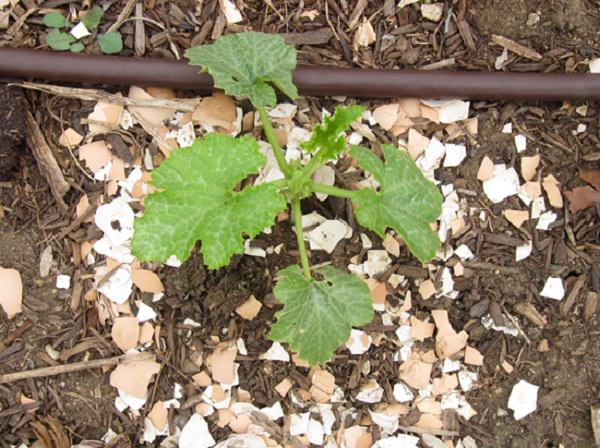
Every new gardener seeking out knowledge will eventually be subjected to their fair share of folklore and superstition. I actually went seeking out some of more outlandish tales and stumbled upon the Blind Pig and the Acorn. Some of the more interesting and sanguine examples:
- Flowers which bloom out of season are evil.
- Bury nails around the roots of Hydrangea to make the blooms blue.
- Grass won’t grow where human blood has been spilled.
- Planting peppers when you’re mad, makes the peppers grow hotter.
I’m on board with the Hydrangeas advice, as nails are pure iron. The motives and diabolical plans of carnivorous flowers aside, the grass one doesn’t work for me. Like all blood, human blood is rich in nitrogen.
Egg Shells
Perhaps the most well-known folklore about tomatoes is that burying egg shells in the same hole as the tomato is good for the plant and will stave off Blossom End Rot. I guess the first question you have to ask yourself is, do intact chicken egg shells actually decompose? For the answer to that question, we refer to the Eggshell Decomposition Study started by Robert Pavlis in September 2015. After a year, he dug up the shells he had buried and found “The remaining shell was intact and showed no visual signs of decomposition.“
It gets better. According to a UT master’s thesis « An Analysis of the Avian Fauna and Eggshell Assemblage From a 19th Century Enslaved African American Subfloor Pit, Poplar Forest, Virginia » during the 2003-2004 archaeological investigations at Thomas Jefferson’s Poplar Forest Plantation, thousands of eggshell fragments from both chicken and ducks were excavated. If chicken and duck eggshells are still discernible after 165 years, what are the chances they will break down in a few months or even a year in your garden?
As for the promotion of egg shells as a cure-all for Blossom End Rot, this physiological disorder (it is not a disease) is caused not by a lack of calcium, as most soils have plenty, but a failure of the plant to effectively distribute the calcium available to it. BER is often caused by an out-of-whack pH which can be adjusted through the addition of dolomitic lime. It is also very likely in a garden with an inconsistent watering schedule or a lack of mulch to retain moisture in the top few inches of the soil.
Conclusion: Egg shells will only break down and contribute calcium to the surrounding soil if pulverized in a coffee grinder or mortar and pestle. Blossom End Rot has several causes, rarely from a lack of calcium.
Coffee Grounds

Sunset Magazine, wanting to provide accurate information to the readers of its popular gardening monthly, sent a batch of Starbucks’ used coffee grounds to a soil lab for analysis. Impressively, the lab found that the coffee grounds had a guaranteed analysis of 2.28% Nitrogen, 0.06% Phosphorous, and 0.6% Potassium. The grounds also had traces of Magnesium and Copper. It’s important to note that most of the Nitrogen is locked up and needs time and the action of soil microbes to break down before it becomes available to plants. Overall, the study supported the idea that coffee grounds are an excellent soil addition. It’s worth reading the detailed report.
As for the idea that coffee grounds are very acidic and concerns about disrupting soil pH, the report found that the grounds had a pH of 6.2 which is on the acidic side. A number of folks on GardenWeb found a much more neutral pH (as high as 6.9) in their own studies. Starbucks is known for its dark roasts, after all.
You may be tempted to use coffee “waste” from a coffee roasting facility, however this can be very acidic. It is advisable to only use spent coffee grounds. Fortunately, Starbucks provides these free-of-charge to gardeners upon request. You may need to call your local store early in the morning to request they save their grounds for the day, which can then be picked up in the afternoon.
Conclusion: Spent coffee grounds are an excellent soil addition.
